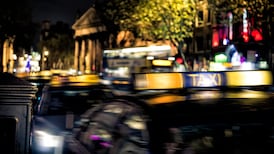Iran’s army chief declared on Thursday that police had already quelled anti-government unrest that has killed 21 people but that his troops were ready to intervene if needed, as Tehran staged more pro-government rallies.
The protests, which seem spontaneous and without a unifying leader, erupted a week ago in Iran’s second city of Mashhad over economic hardships – mostly high youth unemployment, costly living standards and alleged corruption.
“Although this blind sedition was so small that a portion of the police force was able to nip it in the bud . . . you can rest assured that your comrades in the Islamic Republic’s army would be ready to confront the dupes of the Great Satan [United States],” Maj Gen Abdolrahim Mousavi was quoted in official media as saying.
Iran’s vastness as well as restrictions on independent media make it hard to determine the breadth and depth of the unrest. Semi-official labour news agency ILNA said the government on Thursday lifted restrictions on Instagram, one of the social media tools used to mobilise protesters. But access to a more widely used messaging app, Telegram, remained blocked, suggesting authorities remained uneasy about protest threats.
In the latest protests, which generally occur after nightfall, social media video showed demonstrators in Khorramabad in southwestern Iran on Wednesday evening throwing stones at riot police, who were retreating. In other social media footage, hundreds poured into streets of the northwestern city of Orumiyeh near the Turkish border, chanting anti-government slogans.
Other videos showed protesters in Ahvaz, capital of oil-rich Khuzestan province, setting a bank on fire. None of the videos could be authenticated by Reuters.
The student news agency ISNA quoted interior minister Abdolreza Rahmani Fazli as saying on Thursday that “at most 42,000 people attended the protests, which is not much” in a nation of 80 million people.
‘Troublemakers’
On Wednesday, the commander of the elite Revolutionary Guards, Maj Gen Mohammad Ali Jafari, said the number of “troublemakers” did not exceed 15,000 nationwide.
As unrest spread across Iran, mainly in smaller cities and towns, protesters said they were tired of official anti-western rhetoric and it was time for Supreme Leader Ayatollah Ali Khamenei and the government of President Hassan Rouhani to quit.
Protests have drawn largely young people and workers but have begun to take in members of the educated middle class that formed the backbone of a pro-reform revolt almost a decade ago.
After six days of demonstrations, Maj Gen Jafari said on Wednesday that Revolutionary Guards units had been deployed to put down protests in three provinces that have been hotbeds of unrest. That was the clearest sign yet that authorities were taking the protests seriously.
The Revolutionary Guards, the sword and shield of Iran’s Shia theocracy, were instrumental in suppressing an uprising over alleged election fraud in 2009 in which dozens were killed.
State television broadcast live pictures of further pro-government rallies on Thursday, including Ghaemshahr in northern Iran and Mashhad in the northeast, as well as Shahin Shahr in central Iran. Marchers were carrying posters saying, “No to riots . . . Iran is not Syria” and “Death to seditionists”, as well as portraits of Ayatollah Khamenei.
State media said three Iranian security agents were killed on Wednesday near the Iraqi border in a clash that led to the dismantling of a team of “counter-revolutionaries” who had planned to cause explosions and provoke unrest. The intelligence ministry said several “terrorists” were killed in the clash and one was arrested. – Reuters










